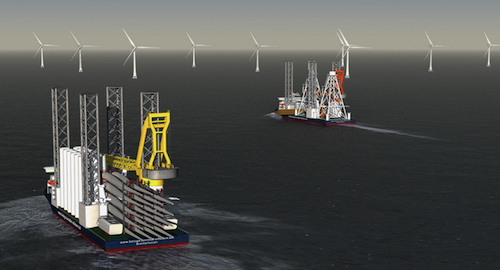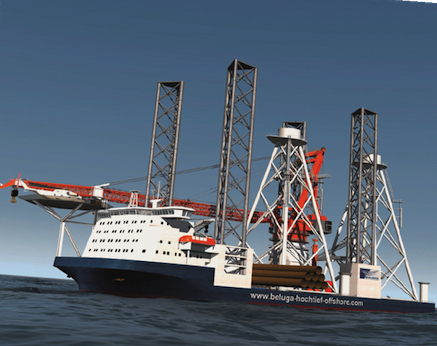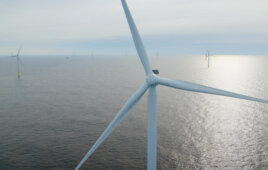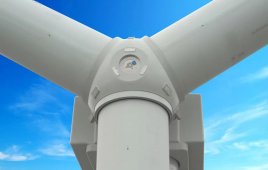The future of the world’s energy supplies is being decided to no small degree by offshore projects. Wind power offers its greatest potential at offshore facilities far from shipping routes and harbors. According to the European Wind Association, installed offshore output should increase tenfold in the next six years, reaching up to 15 GW. AWEA agrees, saying the coastal waters of North America hold tremendous potential for wind development. The U.S. Department of Energy’s 20% wind scenario also estimates that 54 GW of offshore wind will be included in the 300 GW required to meet 20% of the U.S. electricity needs in 2030. This wind market segment is poised for growth. Experts say the biggest obstacle to development is a shortage of assembly capacity for this kind of offshore power plant. Working far offshore amid the strongest winds and turbulent seas requires a new type of vessel.

GL Garrard Hassan has been another player in the ship’s development. The company has provided consulting for the crane design and the jacking system, as well as finiteelement analyses. The design allows transportation, lifting, and placement with just one installation unit.
One joint venture aims to create such a ship. Hochtief has combined its construction capabilities with Beluga’s logistics to commission a jack-up vessel the companies say will assemble offshore wind turbines rapidly. “With this jack-up vessel, we will be able to significantly reduce the assembly and servicing times required for latest-generation offshore wind turbines, thus hugely increasing productivity,” explains Niels Stolberg, president and CEO of Beluga Shipping. “The installation of wind turbines at sea will become safer, more efficient, and cheaper.”
The companies say the jack-up vessel will be able to install more than 80 wind turbines each year, and on 120-m towers. The four legs jack down to the ocean floor to stabilize and support a crane in water depths to 50-m. The vessel’s most distinctive features are its high-load capacity of 8,000 tons, its high-performance 1,500-ton crane, and a powerful drive. Simulations have shown that the ship can even deploy when the sea is rough.

The ships combine a transport vessel and a jack-up platform, and also have applications in the oil and gas industries
The joint venture, Beluga Hochtief, is responsible for the ship’s development and will also operate and charter the vessel once constructed. While the vessel should go into service in 2012, Henner Mahlstedt, chairman of the executive board of Hochtief Construction says the company is already considering the construction of a second jack-up vessel.
WPE
Filed Under: Construction, Offshore wind, Projects





Perhaps so to build a special ship for the construction of the newest design of shore wind turbine WINDMILL RED BARON.
Further information on
http://www.engineeringexchange.com/group/greenengineering
Regards Andrew